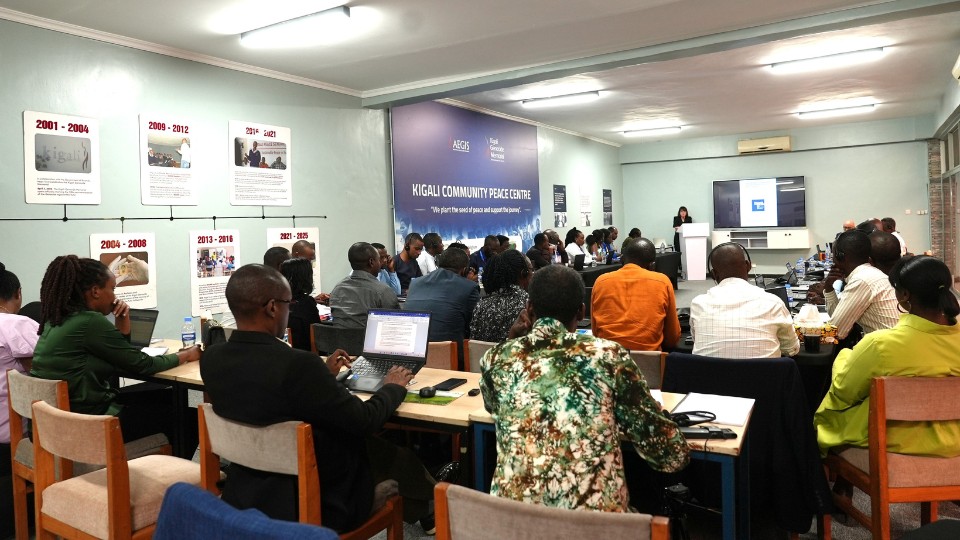From 18 to 23 November 2025, staff from the Ministry of National Unity and Civic Engagement (MINUBUMWE), Aegis Trust, and affiliated agencies participated in an intensive training programme organized by the Mémorial de la Shoah with MINUBUMWE and Aegis, hosted at the Kigali Genocide Memorial and Ntarama Genocide Memorial. The training focused on enhancing knowledge and skills in archival research, educational programming, and the preservation of material evidence related to the Genocide against the Tutsi.
Participants explored methodological approaches for guiding visitors, were introduced to a newly developed corpus of archival documents, and engaged in pedagogical workshops. Group exercises allowed participants to practice applying these resources in educational settings, particularly for school group visits, followed by interactive feedback sessions.
At Ntarama Memorial, participants applied their learning in a site-specific context, examining how archival documents can inform daily practices and enhance the interpretation of the memorial’s history. Sessions on museography and interpretation, led by Aegis Trust CEO and Kigali Genocide Memorial Director Mr. Freddy Mutanguha, covered principles of exhibit presentation, a case study of Ntarama’s new exhibition gallery, and narrative techniques for interpreting memorial artefacts. Mr. Mutanguha highlighted museography as the combination of techniques for exhibiting objects, designing spaces, and creating presentation systems, and interpretation as a process that helps visitors understand, feel, and give meaning to collections, with examples including classical, immersive, and digital approaches.
The training also focused on the scientific preservation of material evidence of the Genocide, including conservation protocols for victims’ clothing and lime-treated human remains. The programme concluded with discussions, evaluations, and a certificate ceremony.
Minister of National Unity and Civic Engagement, Dr. Bizimana Jean Damascène, emphasized:
“By using accurate archival evidence and presenting our history clearly and chronologically, we ensure that every visitor, especially the youth, gains a truthful and meaningful understanding of the Genocide against the Tutsi and Rwanda’s journey of reconstruction.”
Hubert Strouk of the Mémorial de la Shoah added:
“Preserving the stories and material evidence of the Genocide is not only an act of memory, but a responsibility to ensure that the victims’ voices continue to guide us toward peace and humanity. Through this training, we empower educators and memorial professionals to transform historical evidence into lessons that inspire awareness, reflection, and action against hatred.”
This training strengthens the capacity of memorial staff and partners to preserve Rwanda’s history, educate future generations, and contribute to sustainable peace and reconciliation.

